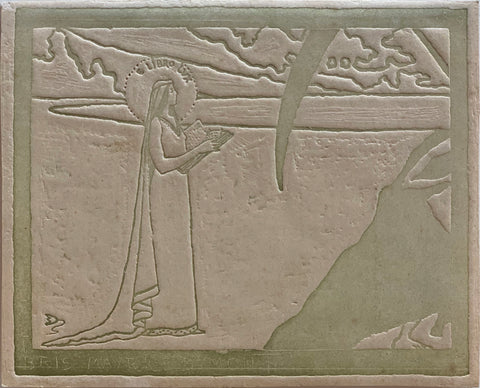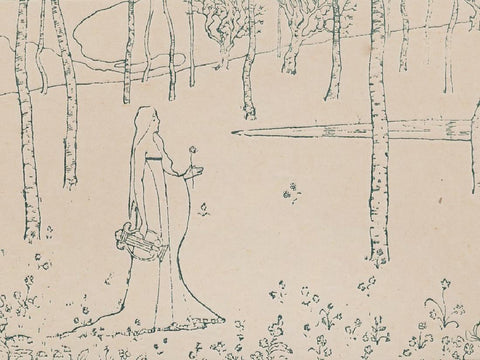Maurice Dumont is the son of Marie-Louise and Pierre Dumont, a teacher at Avranches College.
Between March 30 and June 8, 1890, he founded the satirical newspaper L'Art Libre, a fully illustrated, illustrated literary journal, where he published twelve issues in which he proposed his own poems signed under the pseudonym Jean Stels. and that he himself illustrates by signing his monogram "MD". He denounces the conformist press and recommends reading the French Courrier.
He was admitted the same year as a free candidate at the École des Beaux-Arts in Paris, trained in engraving and took courses among others Leon Bonnat.
In 1893, he published Les Chimérales, a collection of his poems then realizes
the frontispiece of the magazine La Plume; he met Leon Deschamps, who introduced him to the literary milieu of Paris.
In 1894 he met Paul Fort. Together, in December they founded the literary and artistic magazine L'Épreuve, Journal-Album d'art, which published for one year 134 original lithographs of 60 French Symbolist artists, including Maurice Denis, with whom he is very close, Paul Gauguin, Pierre Bonnard and Édouard Vuillard.
Dumont also produces several posters and programs for the Théâtre de
l'Œuvre, including Ibsen 's Brand and Carmosine de Musset. Dumont joined forces with Edmond Pilon for the literary section he developed in March 1895 in a supplement, L'Épreuve littéraire, which then hosted the French edition of the German magazine Pan, directed by Henri Albert.
In 1895, he joined the Association founded by Fernand Clerget which includes a publishing house, a showroom and a library at 17 rue Guénégaud. Dumont realizes the mark of the cabinet of reading titled Library of the Association and school France. In this place, he exhibits his prints, alongside artists such as Eugène Carrière, Frederic-Auguste Cazals, Henri-Gabriel Ibels, Félicien Rops, an impressive list of confirmed or novice artists who also collaborate at L’Épreuve.
In March 1896, Dumont took again the magazine of Paul Fort to which he associates himself, The Book of art, welcoming feathers like Saint-Pol-
Roux, Ferdinand Hérold or Rachilde, and including only wood engravings. Dumont prints it in his own workshop but went bankrupt in the summer of 1896 after four issues. His magazine merges with La Revue rouge directed by Gustave Langlet, Jules Heyne and Manuel Devaldès.
From September 6, 1896 to September 26, 1897, he collaborated with
the Courrier français on the recommendations of his friend Georges Jeanniot. He loses suddenly his wife and daughter.
Maurice Dumont died on June 18, 1899, at the age of twenty-nine as a result
of tuberculosis.
He is the inventor of two engraving processes, gypsography - along with Pierre Roche - and "glytotypy": the board is printed in relief so that the inked parts pressed deep into the paper leave the parts inked in relief.


